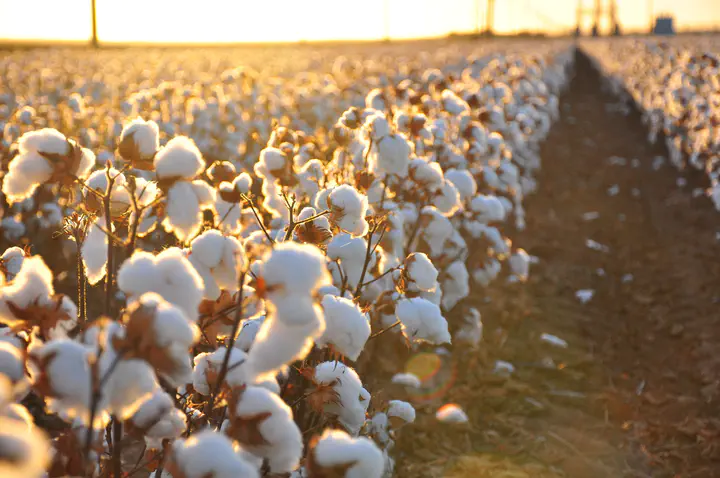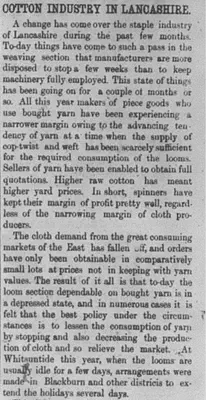The Cotton Industry

The article “Cotton Industry in Lancashire” in the June 24, 1907 issue caught my attention since it shows how a textile that we use today, such as cotton, was used over a century ago. This article discusses how there was a surge in the production of raw cotton and how the industry of yarn weavers was able to handle this situation. In a brief statement – the weavers could not handle the overwhelming amounts of raw cotton being produced and had to cut manufacturing for a few weeks at a time.

This led to the up-rise of the spinning industry for cotton since the method was much more advanced and faster than the weaving method for goods. The cotton industry was being taken over by the newly found cotton industry in America causing an offset in production and quantity of raw cotton in Egypt and Lancashire at the time and in an imbalance in the financial markets. This can be known as “War Capitalism” a movement where developed nations were taking the crops and markets of smaller nations such as Egypt during this time and doubling their market. There is a great concern for how other markets such as those in America and Europe will impact the growth of the Egyptian cotton market through the West African slave trade, since cotton is Egypt’s number one crop. This led to Egypt selling off a fertile land to large estates to make every available land crops for cotton. By the 1900s, Egypt’s land was made up of 40% of cotton crops. In 1907, Egypt’s cotton crops were thriving and competing internationally with America and England with this textile.
Today, the cotton industry is still important in America and is still increasing as one of the top textiles produced in America. In Egypt, the cotton industry is still as prosperous yet unreliable due to wavering points of success and crises in the industry.
##Links